Transformations of Nature and People
Dr. Nicole ChalmerIn her recently released book, Ecoagriculture for a Sustainable Food Future, Dr. Nicole Chalmer, “explores the damage that has arisen from farming systems unsuited to their environment, and presents compelling evidence that producing food is an ecological process that needs to be rethought in order to ensure resilient food production into the future.”
In a series of blogs that she is writing for Sustain, Dr. Chalmer is providing and expounding on excerpts from her book, published by CSIRO Publishing. In her first entry, she reflected on her personal experiences in agriculture that led her to write the book. Here, she delves deeper into how food production has always been the largest driver of environmental change.
Ecoagriculture for a Sustainable Food Future: Chapter 1, Part 1: Transformations of Nature and People
Human food production systems both past and present have led to destruction of ecosystems. This happens as forests, bushlands, and native grasslands are cleared, human and animal cultures lost, soils degraded, landscapes desertified and finite resources used up.
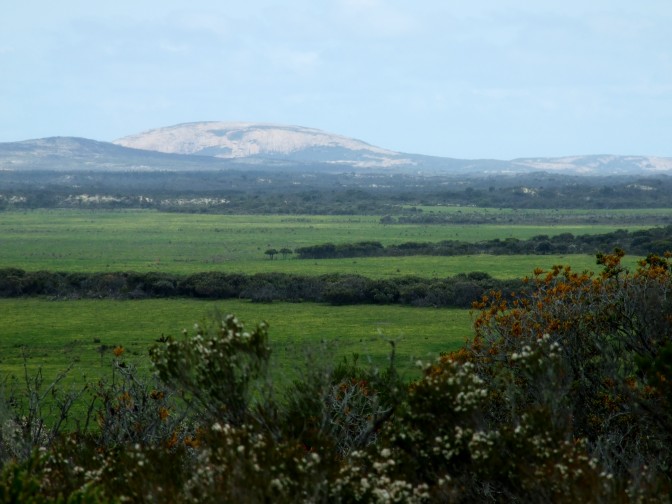
A more sustainable landscape with protected bush and perennial pastures. Photo by author.
The foundational pillars of any society, human or non-human, are amazingly simple: Good water and good food. They are underpinned by the long-term soil foundations, ecosystem functions on farms, and in surrounding environments that are essential for healthy, resilient food systems.
In today’s world, unlimited economic and population growth are believed to be ideal, no matter the environmental and social damage caused—these are merely dismissed as externalities. This fantastical human idea, unsupported by the reality of a finite Earth, lies behind local, regional and world climate change, extinctions of land and ocean species, and expanding desertification. These along with other threats to planetary boundaries could lead to an Earth uninhabitable to humans and most familiar animals and plants.
Farming in Australia is a fragile business. Our soils are inherently infertile for growing our culturally acceptable foods that originated in fertile, geologically young Northern hemisphere countries. To prevent mining soils of nutrients when farm produce is sold requires continuous inputs of fertilisers, phosphorous, nitrogen, and potassium as well as vital trace minerals for plant, animal, and human health.
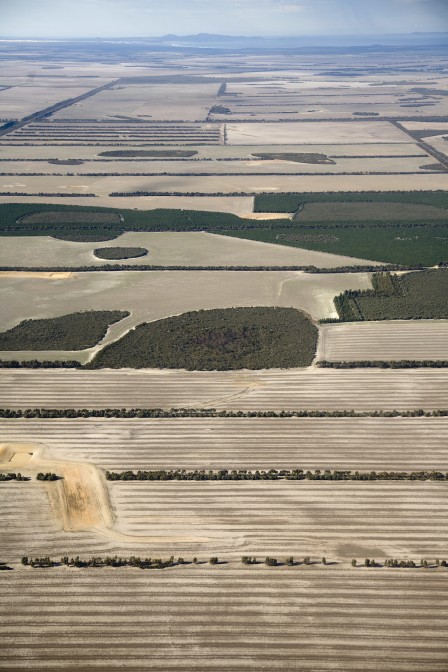
Wheat landscape with remnant vegetation. Photo by Richard Woldenberg.
Over 63% of Australian landscapes are owned or leased by farmers, state governments, corporate farms and mines, graziers and pastoralists. Ownership and various lease conditions allow unrestricted or semi-restricted autonomy of how the land is treated. This autonomy, seen as an individual right, ignores the wider interconnectedness of landscapes and ecological systems. In reality, Australian landscapes are essentially under generational stewardship, and what is done to them on an individual basis can collectively impact whole regions and futures.
Australian landscapes are essentially under generational stewardship, and what is done to them on an individual basis can collectively impact whole regions and futures.
Overwhelmingly productivist and short-term maximised production aims are encouraged and dominate Australian agriculture. Therefore, “loving Country,” and using ecological agriculture principals to sustainably produce food for the long term, is regarded as overly emotional and reducing of the bottom line. The agribusiness attitude is that farm business owners cannot afford to, are by heritage unable to, or could endanger business by forming emotional and ecological attachments to their land.
Rather than learn from long-term, relatively sustainable adaptive indigenous food systems that lasted for thousands of years, modern systems are seen as a superior progression from their “primitiveness.” It reflects an arrogant assumption that after only 200+ years, we invaders know more about producing food and managing this country than those who lived here for 50,000 years and more!
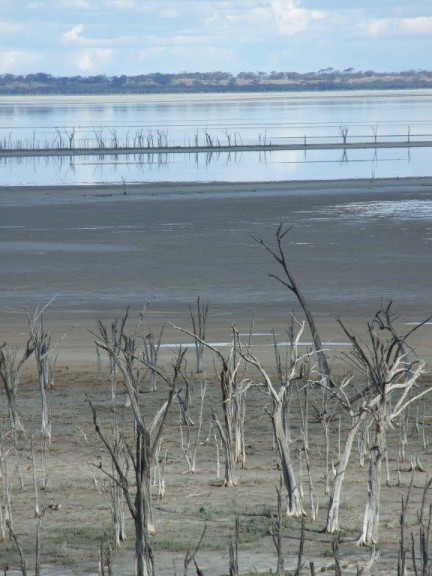
A developing saline landscape. Photo by author.
Modern agricultural systems are seen as a superior progression... It reflects an arrogant assumption that after only 200+ years, we invaders know more about producing food and managing this country than those who lived here for 50,000 years and more!
I disagree with this cold economic rationalist view. Feelings of attachment are legitimate and are vital for encouraging responsible land stewardship for future generations of people, plants, animals and ecosystems that can sustain Australia’s future. The practice of food production is more than an economic system, it is a lifeway connecting ecologies, culture, and feelings of purpose and belonging. Ecological literacy is crucial to those who manage Australian landscapes.
Here in the Esperance bioregion where I farm, the land and its ecosystems were treated cruelly during the 1960s to 1980s. Government-sanctioned acts of violent over-clearing vandalised river and stream banks, destroyed lakes and wetlands. So many of the region’s ecosystems were destroyed that those patches remaining are now listed as critically endangered ecological communities. In Western Australia, there are 393 such ecological communities – I fear how many Australia-wide!
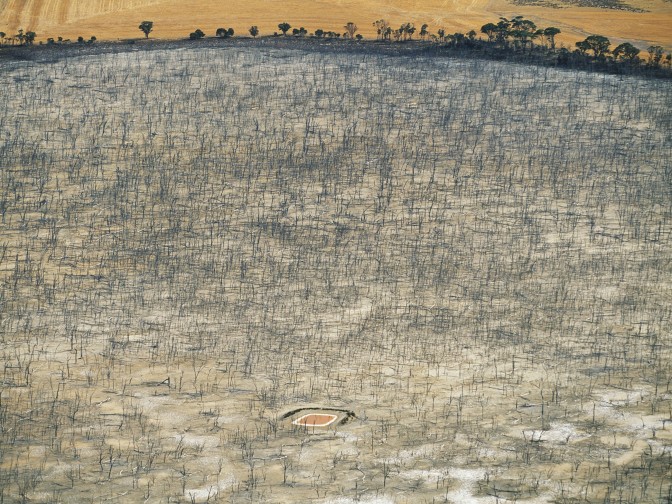
A salt swamp that was once freshwater (see the dam in the middle) caused by clearing over 90% of surrounding perennial bush and replacing with annual cropping monocultures". Photo by Richard Woldendorp.
As one of the last cleared, our farm fared a little better, with swamps and wetlands preserved. Within our farming system we have aimed to maximise biodiversity and habitats by fencing them to prevent livestock damage. The poor drifting sandy soils have been stabilised with claying and well-fertilised perennial grasses and legumes that promote biodiversity, soil carbon, nutrient and water-holding capacity.
I become frustrated by ecologically ignorant media statements such as, “Go veg, save the planet.” Producing meat, milk, and fibre from livestock farms have far greater potential to mimic “natural” ecosystems than do monocultural cropping or horticultural farms. Well managed mixed perennial pastures with large, interconnected mosaics of herbivore protected revegetation and native bush habitat, can mimic or include native grasslands and bushlands. Habitat is provided for soil organisms, grassland species including invertebrates such as spiders, bees, native bees and many insect predators; numerous bird species including plovers, grass wrens, elegant parrots, bush turkeys and emus; mammals such as bandicoots, wallabies, kangaroos.
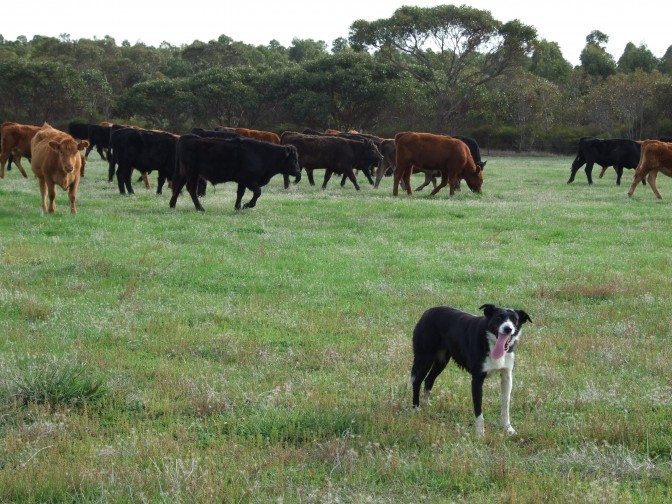
Cattle grazing, perennial based pasture in autumn. Photo by author.
Monocultural, plant-only food systems use far more chemical sprays (some with half-lives of 50 or more years), devastating soil organisms and helpful insects as well as pests, and potentially harming humans that eat them. They certainly don’t encourage birds and mammals that may damage or eat crops. Growing salinisation is also a result of replacing perennial plant/animal systems with annual pastures and crops over vast landscapes.
The future sustainability of food production in Australia and worldwide desperately needs ecological wisdom learnt from past human and deep pre-human environmental histories that lasted for millennia. This does not mean re-creating exact past ecologies because most of the important landscape managers, human and non-human, are gone. But we can learn how to mimic and manage them with the introduced and native animal and plant species (including us) left.
The second part of Chapter One (to come) discusses the important ecological concepts that underly Ecoagriculture for a Sustainable Food Future, as we proceed through time to understand Australia’s human food ecology.
About the Author
Nicole Chalmer gained a Bachelor of Science and Graduate Diploma in Agribusiness before going farming for 30 years. She partnered in developing Coronet Hill at Esperance using ecological principles and perennial pastures for cattle production. Discontent concerning the social-ecological sustainability of modern farming led her to complete an environmental history PhD analysing sustainability of food production systems, from the deep past, colonialism and present. Her book Ecoagriculture for a Sustainable Food Future, released May 2021, is available from CSIRO Publishing.
